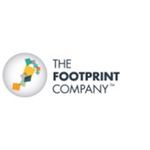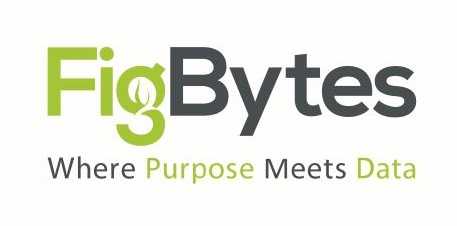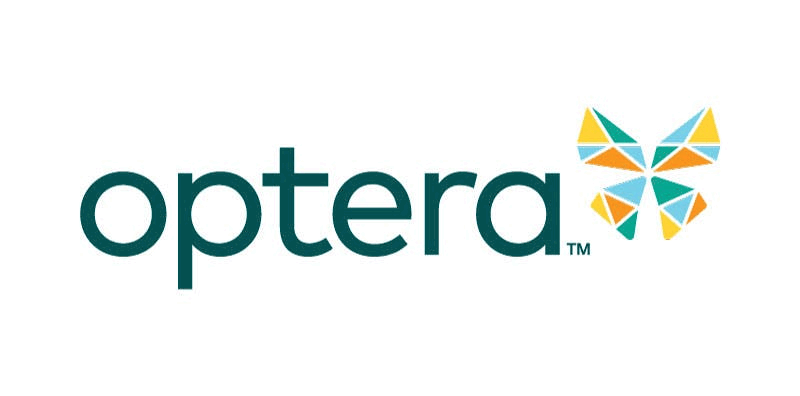Yes, sustainability software is intended to be accessible from numerous devices and platforms. This means you may access and use the software on your desktop computer, laptop, tablet, or smartphone, as well as on a variety of operating systems like Windows, Mac, iOS, and Android. This makes it easier for organizations and people to monitor and manage their sustainability efforts from any device or location.
List of 20 Best Sustainability Software
the Footprint Calculator solution for reducing your environmental impact and promoting a greener world. This powerful tool allows for effortless tracking of your businesss carbon emissions and provides easy-to-use sustainability tools. Take charge of...Read More Footprint Calculator
EQ360 is a ESG data solution that guarantees compliance and precise reporting. Stay updated on crucial metrics aligned with international frameworks and produce all-inclusive reports to guide your ESG strategies. Streamline the decision-making proces...Read More EQ360
FigBytes is sustainability management solution that empowers companies to measure and communicate their sustainability and ESG impacts. By seamlessly integrating sustainability metrics into performance, strategy, and branding, FigBytes enables busine...Read More Figbytes
Gensuite EHS Management Software solution for streamlining safety data management. Our user-friendly applications cover all facets of a top-performing safety program, prioritizing employee health and ensuring compliance with OSHA reporting and OHSAS...Read More Gensuite
EHS Insight is an efficient EHS software that streamlines business processes. Our comprehensive solution integrates quality, performance and safety management to empower organizations with the necessary tools for success. With a flexible pricing mode...Read More EHS Insight
Sphera EHS is a solution for effectively managing environmental, health, and safety requirements. Tailored to meet the needs of various industries, this robust software streamlines safety protocols, ensures compliance, and supports sustainable practi...Read More Sphera EHS
Ecochain is a LCA software that revolutionizes the way companies track and reduce their ecological footprint. Our easy-to-use platform empowers businesses to evaluate, compare, and improve the environmental impact of their products, leading to a more...Read More Ecochain
thinkstep GaBi software for conducting life cycle assessments (LCA) and improving environmental performance. With its rich database and user-friendly interface, it empowers businesses to meet sustainability goals and make sustainable choices. With th...Read More thinkstep GaBi
Enablon is software platform that enables businesses to effectively manage water resources and meet water stewardship obligations. It helps companies maintain compliance with regulations and demonstrate responsible use of water by proactively monitor...Read More Enablon
Ecometricas versatile Platform offers a range of sustainability tools tailored for businesses of all sizes. Our data-driven solutions are user-friendly and can be easily integrated or exported in any format. With reliable features, Ecometrica is the...Read More Ecometrica
SAMETRICA is a sustainability software that simplifies the creation of impact reports. Our platform requires no special hardware, making it easy for you to generate customizable reports instantly. With comprehensive features, you can manage your end-...Read More SAMETRICA
Enviance is a EHS software that offers businesses real-time and crucial information. Its intuitive and contemporary interface makes it effortless to navigate. From audit and industrial safety to incident and occupational health management, Enviance p...Read More Enviance
Welcome to Persefoni is a Carbon Accounting and Climate Disclosure Solution offered as a Software-as-a-Service. Our ERP of ClimateTM platform empowers enterprises and financial institutions to fulfill stakeholder and regulatory climate disclosure req...Read More Persefoni
Worldfavor is a global platform that streamlines sustainability and compliance data from well-known frameworks. This powerful platform empowers businesses worldwide to effortlessly access and exchange sustainability information in a secure and collab...Read More Worldfavor
isEazy ESG is a tool for promoting sustainability and cultivating a conscious workforce. Streamline non-financial reporting and drive positive change within your company with ease. Empower your employees to embrace sustainable development goals (SDGs...Read More isEazy ESG
Optera is an innovative cloud-based software that helps organizations simplify their ESG efforts by offering enhanced program visibility and engaging stakeholders. Our platform is backed by a team of experienced professionals and keeps up with market...Read More Optera
Pexapark is a energy investment platform for post-subsidy renewable energy sales and risk management. With a global presence in 18 countries, our software serves as a comprehensive operating system for energy trading and sales. We offer advanced tool...Read More Pexapark
Diligent ESG is a platform tailored to simplify sustainability and ESG reporting. With our powerful system, easily track progress, monitor risks, measure GHG emissions, and communicate with the board and investors. Stay ahead and well-informed with D...Read More Diligent ESG
TreeClicks is a browser extension, compatible with Chrome and Firefox. With over 50,000 partner merchants, it allows you to easily contribute to reforestation efforts with every purchase you make. By utilizing a portion of the advertising fee, we are...Read More TreeClicks
Quentic: A comprehensive cloud-based EHSQ and ESG management software designed to simplify compliance, enhance safety, and promote sustainability for businesses of all sizes. With its multi-faceted features, Quentic empowers organizations to efficien...Read More Quentic
Learn More About Sustainability Software
- What Is Sustainability Software?
- What Are The Recent Trends In Sustainability Software?
- Benefits Of Using Sustainability Software
- Important Factors To Consider While Purchasing Sustainability Software?
- What Are The Key Features To Look For In Sustainability Software?
- Why Do Businesses Need Sustainability Software?
- How Much Time Is Required To Implement Sustainability Software?
- What Is The Level Of Customization Available In Sustainability Software?
- Which Industries Can Benefit The Most From Sustainability Software?
- Conclusion
What Is Sustainability Software?
Sustainability software, often known as environmental management software, is a digital technology that enables businesses and organizations to monitor, track, and improve their environmental impact. It offers a systematic way to managing sustainability efforts, such as lowering carbon footprints, eliminating waste, and encouraging ethical and socially responsible practices.
This type of software combines data administration, analysis, and reporting capabilities to assist organizations in setting and achieving sustainability objectives. One of the primary advantages of sustainability software is its capacity to collect and analyze data on environmental effect in a centralized and user-friendly platform. This enables firms to identify areas for development and make data-driven decisions for better sustainability management.
Furthermore, sustainability software can help with compliance and reporting needs, ensuring that firms adhere to regulatory guidelines. There are several types of sustainability software available, each tailored to a certain purpose or industry. For example, software is available for supply chain management, energy management, and sustainability reporting.
Some software systems also provide predictive analytics, scenario planning, and AI-powered recommendations for improving sustainability initiatives. When looking to buy sustainability software, you should analyze your organization's specific needs and goals. Key features to look for include data tracking and reporting capabilities, connectivity with existing systems, and an easy-to-use interface.
It is also critical to analyze the vendor's support and training offerings to ensure a seamless implementation and long-term use. Investing in sustainability software can help firms decrease their environmental footprint while simultaneously improving their reputation, increasing efficiency, and driving overall commercial success. With a growing emphasis on sustainability and environmental responsibility, it is becoming an essential tool for enterprises and organizations of all sizes and sectors.
What Are The Recent Trends In Sustainability Software?
Recent advancements in sustainability software have been influenced by the growing awareness and relevance of sustainability and environmental effect in today's corporate world. As businesses attempt to be more socially responsible and decrease their carbon impact, the need for effective sustainability software has increased dramatically.
Buyers of sustainability software should be aware of the following main trends:
1. Integration With Other Business Systems: Sustainability software is becoming increasingly integrated with other business systems, such as supply chain management and financial reporting. This enables a more thorough and accurate assessment of an organization's sustainability activities and their impact on the broader business.
2. Cloud-Based Solutions: With the development of remote work and the requirement for fast data administration, cloud-based sustainability software is gaining popularity. This enables quick access and collaboration on sustainability projects from anywhere, at any time.
3. AI And Machine Learning Capabilities: In recent years, sustainability software has expanded to include artificial intelligence (AI) and machine learning skills, which can analyze massive volumes of data and provide insights and recommendations for enhancing sustainability initiatives.
4. Real-Time Monitoring And Reporting: As stakeholders and regulators demand that sustainability metrics be tracked and reported in real time, sustainability software has evolved to allow real-time monitoring and reporting of key performance indicators (KPIs). This helps firms stay on track with their sustainability goals and identify opportunities for improvement.
5. Focus On Supply Chain Sustainability: As businesses strive to make their entire supply chain more sustainable, there has been a shift toward sustainability software that can measure and analyze suppliers' environmental effect. This promotes transparency and accountability throughout the supply chain.
6. Emphasis On Data Security And Privacy: As sustainability data becomes more important and sensitive, the significance of data security and privacy in sustainability software grows. Buyers should ensure that the software they pick includes strong security features to protect their data.
Overall, sustainability software is always improving to match changing organizational objectives and priorities. Buyers should think hard about their individual sustainability goals before selecting a software solution that will successfully support and enhance their efforts.
Benefits Of Using Sustainability Software
Sustainability software has emerged as a crucial tool for firms seeking to make a positive influence on the environment and society. With rising customer demand for ecologically friendly activities, sustainability software provides a comprehensive solution for businesses to track, measure, and improve their sustainability initiatives.
Let's explore, we'll look at the advantages of utilizing sustainability software to help you make an informed decision about your organization.
1. Efficient Data Management: Sustainability software enables firms to collect and manage massive volumes of sustainability data such as energy use, trash generation, and carbon emissions. This removes the need for manual data entry and streamlines the reporting process, saving both time and money.
2. Accurate Reporting: Sustainability software enables businesses to generate accurate and reliable sustainability reports, which are critical for transparency and credibility. These reports can be utilized for internal analysis, investor relations, and regulatory compliance.
3. Performance Recording: By recording key performance indicators, sustainability software allows firms to track their progress toward sustainability objectives. This aids in identifying areas for improvement and making data-driven decisions that promote good change.
4. Cost Reductions: Sustainable methods often result in long-term cost reductions. Sustainability software can assist find areas for improvement and cost savings, such as lowering energy consumption or waste generation. This benefits both the environment and the bottom line of the firm.
5. Compliance Management: Many businesses are subject to legislation governing sustainability reporting and emissions reduction. Sustainability software can help you stay compliant by automating data gathering and reporting processes, which reduces the chance of human mistake.
6. Supply Chain Transparency: Sustainability software enables organizations to track the whole supply chain, from raw materials to finished products. This increases openness and helps organizations discover suppliers who do not fulfill sustainability criteria, allowing them to make more responsible decisions.
7. Stakeholder Engagement: Sustainability software allows firms to communicate with stakeholders and workers about their sustainability efforts and progress. This develops a culture of sustainability within the organization and improves its reputation with customers.
Important Factors To Consider While Purchasing Sustainability Software?
When it comes to investing in sustainability software, you must examine several criteria in order to make an informed selection. As businesses worldwide prioritize sustainability, it is critical to invest in software that fulfills your specific requirements and corresponds with your sustainability goals.
Here are the most important elements to consider when selecting sustainability software.
1. Scalability: Before making a purchase, you should analyze the software's scalability. As your organization expands, you will require software that can manage greater datasets and more complicated sustainability measures. As a result, make sure the software you purchase can scale with your firm.
2. Functionality: When it comes to sustainability software, there is no one-size-fits-all approach. It is critical to define the precise features and functionality that your company needs to achieve its sustainability objectives. For example, if your goal is to reduce carbon emissions, you may require software that includes extensive carbon reporting capabilities.
3. Integration: If your company already uses other software or systems, you should think about how the sustainability software you're considering integrates with them. To prevent disruptions or data conflicts, the software should interface effortlessly with your existing systems.
4. Data Management: Sustainability data can be complex and originate from a variety of sources. Your software should be able to handle many forms of data, both qualitative and quantitative, and provide an overall picture of your organization's sustainability performance. It should also support data analysis and visualization, allowing you to make data-driven decisions.
5. User-Friendliness: The software should be simple and intuitive, with a well-organized interface. A sophisticated and difficult-to-use software can lead to low adoption rates and jeopardize the viability of your sustainability efforts. As a result, verify that the software you chose is simple to use and contains adequate training and support for your staff.
6. Customization: Each organization has distinct sustainability requirements, and the software you select should be able to meet those demands. Look for configurable features that will allow you to adjust the program to your company's sustainability objectives and practices.
7. Compliance And Reporting: Compliance with legislation and industry standards is critical for firms that are committed to sustainability. Your software should allow you to accurately track and report on compliance with applicable rules and regulations.
By carefully examining these characteristics, you can guarantee that the sustainability software you select not only satisfies your current requirements, but also has the flexibility to support your company as it develops and evolves on its sustainable path. Before deciding on the software that best corresponds with your company's sustainability vision, conduct thorough study and evaluation of different possibilities.
What Are The Key Features To Look For In Sustainability Software?
Sustainability software has emerged as a crucial tool for firms of all kinds to monitor and improve their environmental, social, and governance effects. However, with so many options available, it can be difficult for purchasers to choose the best software for their individual requirements.
To facilitate the decision process, below are the essential elements you should look for in sustainability software:
1. Comprehensive Tracking And Reporting: The fundamental function of sustainability software is to monitor and report on numerous sustainability indicators like as carbon emissions, energy consumption, trash management, and so on. Look for software that has complete tracking capabilities and delivers detailed reports to ensure accurate and transparent data.
2. Customizable Dashboards: Each firm has unique sustainability goals and KPIs that it wants to focus on. A good sustainability software should allow users to construct adaptable dashboards so they can track and view the data that is most important to their firm.
3. Data Integration: Sustainability data is not restricted to internal activities. It also contains information from suppliers, customers, and other external sources. Make sure the software you chose can combine and analyze data from several sources to provide a complete picture of your sustainability performance.
4. Auditing And Compliance: Businesses must comply with local, national, and international regulations in order to preserve their sustainability credibility. Look for software that has auditing and compliance features to guarantee that your firm is fulfilling all of the required standards.
5. Goal Setting And Progress Tracking: To promote continuous improvement, sustainability software should enable users to set objectives and track their progress toward attaining them. This feature enables businesses to set targets and track their sustainability performance over time.
6. Risk Management: Sustainability risks, such as supply chain interruptions or legislative changes, can have serious consequences for a company's operations. Look for tools that can help you discover and minimize potential hazards in order to preserve sustainable business operations.
7. Collaboration And Engagement: Sustainability should be viewed as a team effort rather than a single department's responsibility. Look for software that encourages employee cooperation and involvement to foster a sustainable culture within the organization.
Why Do Businesses Need Sustainability Software?
Businesses are under increasing pressure from stakeholders to implement sustainable practices and reduce their environmental effect. To do so, they must monitor, measure, and assess their sustainability activities. Here's where sustainability software comes in. Sustainability software is a strong tool that allows firms to manage and report on their sustainability projects.
It combines data from a variety of sources, including energy consumption, waste management, and carbon emissions, to create a comprehensive picture of the company's environmental performance. One of the primary reasons why firms require sustainability software is to be compliant with legislation and meet reporting requirements. Environmental restrictions are tightening, and firms must precisely monitor and report on their sustainability activities to avoid penalties and protect their reputation.
Furthermore, sustainability software assists firms in identifying areas for improvement in their sustainability operations, resulting in cost savings and increased efficiencies. Companies that track energy and resource usage can uncover ways to reduce waste and save money on utilities. Furthermore, sustainability software enables firms to create and evaluate sustainability objectives, measure progress, and communicate their efforts to stakeholders.
This is critical for establishing trust and preserving a positive brand image. Furthermore, sustainability software provides real-time visibility into sustainability KPIs, enabling firms to make data-driven decisions and promote continuous improvement. It also makes benchmarking against industry standards and best practices easier, allowing businesses to stay ahead of the competition.
Overall, with rising customer demand for sustainable products and services, businesses require sustainability software to demonstrate their commitment to sustainability, comply with regulatory obligations, and deliver bottom-line benefits. It is a must-have tool for enterprises of all sizes and industries in today's environmentally conscious society.
How Much Time Is Required To Implement Sustainability Software?
The time required to adopt sustainability software varies according to the program and the company's demands. The implementation procedure can last anything from a few weeks to many months. Some elements that may influence the timetable include the complexity of the software, the size of the firm, and the level of customization required.
The first stage in installing sustainability software is determining the aims and objectives of the company's sustainability efforts. This will assist establish which features and functionalities are required for the software to meet its objectives. It is critical to include key stakeholders in this process so that their wants and concerns are addressed.
Next, the program must be installed and customized to fit the company's specific requirements. This may include integrating the software with existing systems and databases, creating user accounts and permissions, and customizing reports and dashboards. Once the program is installed, personnel who will use it must go through training and onboarding sessions.
This may involve training on how to enter data, evaluate reports, and use certain program capabilities. Finally, the program must be tested and adjusted to ensure that it functions properly and meets the company's requirements. This could include making tweaks and improvements based on user feedback. Overall, the implementation process for sustainability software necessitates careful planning and coordination to achieve seamless integration inside the organization. To realize the benefits of utilizing sustainability software, adequate time and resources must be allocated for a full implementation process.
What Is The Level Of Customization Available In Sustainability Software?
When it comes to sustainability software, one of the most important considerations is the extent of customisation. This refers to the software's flexibility to be tailored to unique organizational needs and goals, making it an invaluable tool to any business or institution seeking to embrace sustainable practices. Some sustainability software solutions provide a high level of customisation, allowing users to select from a variety of features, modules, and reporting choices to meet specific needs.
This may include elements such as carbon footprint tracking, energy and resource management, supply chain sustainability, and others. On the other hand, there are software applications that provide a more uniform approach with less opportunities for personalization. These applications are frequently designed for smaller or less sophisticated companies, making them a more cost-effective and user-friendly solution.
When choosing a sustainability software, you should evaluate your individual objectives and goals, regardless of the extent of customization. Larger enterprises with complicated operations may require a fully configurable application, whilst smaller businesses may benefit from a more conventional solution. It is also worth noting that certain software packages provide differing levels of customisation across different pricing tiers, so carefully consider the features and alternatives before making a decision.
Which Industries Can Benefit The Most From Sustainability Software?
Sustainability has become a primary focus for businesses across industries, as customers and stakeholders demand greater accountability for their environmental impact. As a result, there has been an increase in demand for Sustainability Software, which provides solutions to assist organizations manage and improve their sustainability initiatives. So, which industries will profit the most from implementing Sustainability Software? The short answer is: any industry seeking to become more environmentally and socially responsible. However, some businesses will benefit even more from employing these techniques.
Let's have a closer look at some of them.
1. Manufacturing: The manufacturing industry is well-known for having a large environmental impact due to resource utilization and production procedures. Sustainability software can assist manufacturers in tracking resource usage, identifying areas for improvement, and implementing sustainable efforts such as waste reduction and energy efficiency measures.
2. Retail: As more environmentally conscious consumers emerge, the retail industry is under increasing pressure to embrace sustainable practices. Sustainability software can help businesses manage their supply chains, track carbon emissions, and promote sustainable sourcing and packaging practices.
3. Construction: The construction industry accounts for a large share of worldwide carbon emissions and trash creation. Construction organizations can use sustainability software to analyze and reduce their environmental effect by tracking project materials, energy consumption, and waste management.
4. Food And Beverage: The food and beverage business is no new to sustainability issues, ranging from water consumption to food waste. Sustainability software can help to manage and optimize food production operations, reduce waste, and promote sustainable sourcing and packaging methods.
5. Energy: The energy industry is under increasing pressure to switch to renewable and sustainable energy sources. Sustainability software can assist energy firms measure and analyze their energy output and consumption, find areas for development, and integrate sustainable practices. These are only a few examples, but any industry can benefit from integrating Sustainability Software into their operations.
By doing so, businesses can enhance their environmental and social impact, establish a positive brand reputation, and attract socially conscious customers. Finally, Sustainability Software is a crucial tool for every industry that wants to become more sustainable and keep ahead of the changing sustainability landscape.
Conclusion
To summarize, choosing the correct sustainability software for your organization is a critical decision that should be carefully considered. Understanding the essential features, benefits, and considerations provided in this buyer's guide will allow you to make an informed decision and select the sustainability software that best meets your organization's requirements.
It is critical to first examine your company's sustainability objectives and identify the precise areas where software might help you achieve them. Then, think about the many functions provided by different software, such as energy and resource management, carbon footprint tracking, and sustainability reporting. Furthermore, consider the software's scalability and interoperability with your existing systems and processes.
It is also advisable to look into the software's customer assistance and training options to ensure a smooth implementation and a positive user experience. Finally, evaluate the software's pricing structures, cost-effectiveness, track record, and market reputation. By carefully assessing all of these variables, you can confidently choose sustainability software that will not only help your company function more sustainably, but will also drive development and success in the years to come.
Sustainability Software FAQ's
Can Sustainability Software Be Accessed Across Multiple Devices And Platforms?
Is Sustainability Software Future-Proof And Adaptable To Emerging Technologies Like AI, Blockchain Or IoT?
Yes, sustainability software is future-proof and adaptable to upcoming technologies such as artificial intelligence, blockchain, and the Internet of Things. This is because sustainability software is designed to be adaptable and up-to-date with technological improvements.
Furthermore, sustainability software uses developing technology to improve its ability to measure and manage sustainability initiatives. This means that organizations may continue to employ sustainability software to help them achieve their sustainability goals while also staying ahead of technical developments.
Is There A Free Trial Offered To Assess Sustainability Software Before Committing?
Yes, many sustainability software vendors provide a free trial period before you commit to their services. This allows potential users to evaluate the software's features and functionality to determine whether it meets their requirements. It is an excellent opportunity to evaluate the software's capabilities and decide whether it will be a worthwhile investment for your company. Make sure to use these free samples to make an informed decision.
Does Sustainability Software Offer Data Security Features And Meet Regulatory Compliance Standards?
Yes, most sustainability software solutions have strong data security capabilities to safeguard sensitive information and maintain compliance with regulatory requirements. This includes features like encryption, user access limits, and data backups. Furthermore, many sustainability software suppliers perform regular audits to ensure that their software complies with industry norms and standards, providing organizations with piece of mind about data security and compliance.
Can Sustainability Software Integrate Seamlessly With Existing Tools And Platforms?
Yes, sustainability software is designed to work smoothly with existing tools and platforms. This enables firms to use their existing systems while incorporating sustainable practices into their operations.
Sustainability software, with its open APIs and flexible interface options, may integrate smoothly with a wide range of systems, including CRMs, ERPs, and supply chain management software. This allows firms to properly track and manage sustainability efforts without affecting existing procedures.






















